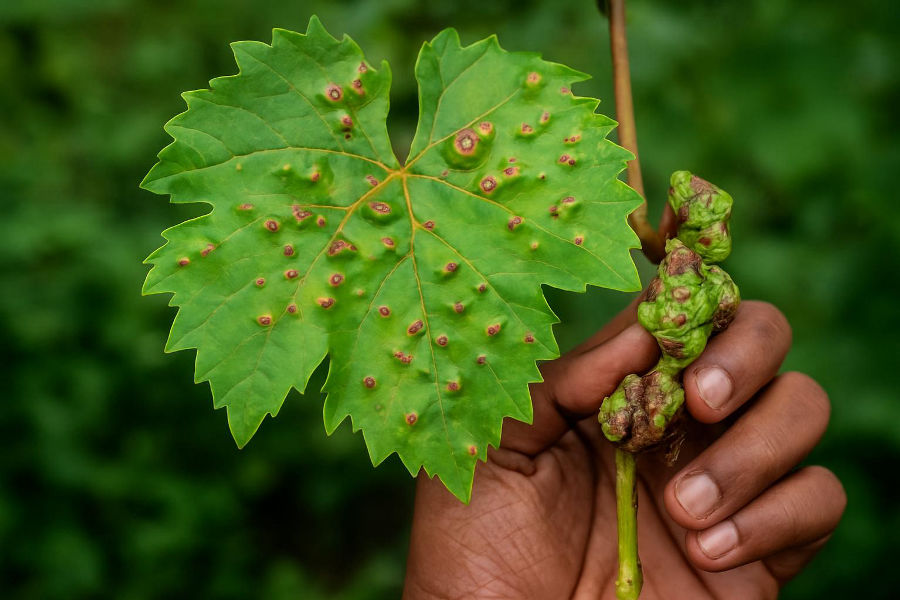Why Are These Brown Spots Appearing on Your Grape Leaves ?
If you're a grape grower and recently noticed round, brown spots on your leaves — some with a grey or sunken center — you're likely dealing with a fungal disease known as Anthracnose, also called Bird’s Eye Spot.
These tiny spots may look harmless at first, but if ignored, they can spread rapidly and affect not only the leaves but also your grape stems and fruits. This can lead to weakened vines, poor fruit quality, and significant yield loss.
What Causes Anthracnose?
Anthracnose is caused by a fungus called Elsinoë ampelina. It thrives in:
-
Warm temperatures (24–28°C)
-
High humidity
-
Moist leaf surfaces
-
Poor air circulation between the vines
This disease spreads through infected plant debris, rain splash, and contaminated tools. That’s why proper hygiene in the vineyard is just as important as plant nutrition.
How to Identify It Early:
-
Small, circular brown to black spots with light or greyish centers on leaves
-
Some spots develop a “bird’s eye” appearance
-
Leaves may become deformed, crack, or develop a shot-hole look
-
You might also find similar spots on young shoots or fruit in severe cases
How to Manage Anthracnose Effectively:
1. Cultural Practices
-
Remove and destroy infected leaves or pruned parts
-
Prune vines to increase airflow and reduce leaf wetness
-
Avoid overhead watering or irrigation during evening hours
-
Use disease-tolerant grape varieties if possible
2. Fungicide Management
Apply fungicides early, especially before the monsoon or at the first sign of infection:
-
Copper oxychloride (3g/L) or Mancozeb (2.5g/L) as preventive sprays
-
Systemic options like Azoxystrobin, Trifloxystrobin + Tebuconazole, or Carbendazim + Mancozeb for curative action
-
Repeat spray every 10–15 days if rainy or humid
3. Biological Options
-
Use biocontrol agents like Trichoderma harzianum or Bacillus subtilis to reduce fungal load naturally
Don’t Wait Too Long!
Anthracnose is manageable, but only if caught early. Timely pruning, clean vineyard hygiene, and a smart spray schedule can save your crop and ensure a healthy harvest.
